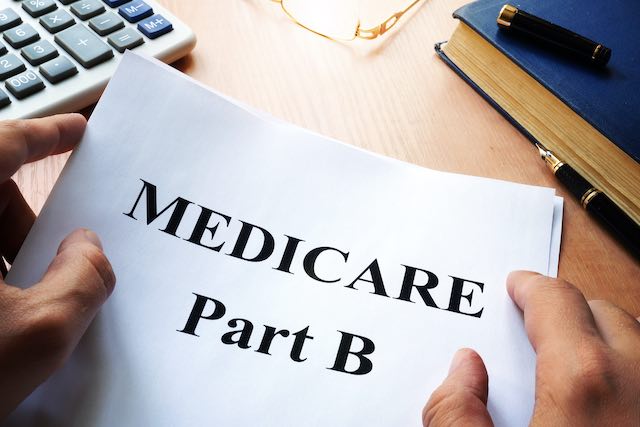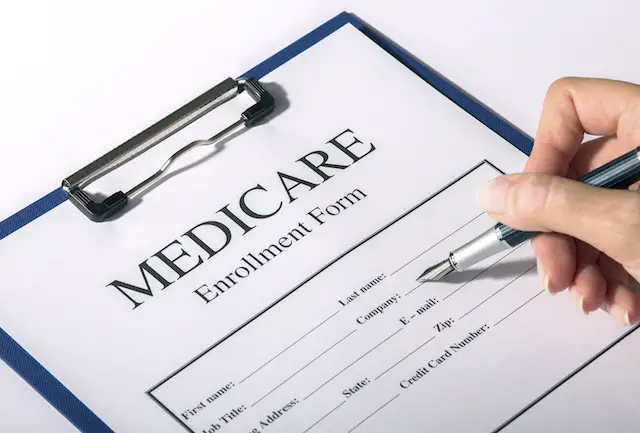One of the most common retirement questions from federal employees is: Should I get Medicare Part B?
While there is no “one size fits all” answer to this question, I do think there is a preferable one for high earning retirees. Why? Surcharges! Federal employees may end up paying more in surcharges for Part B than they save by holding it, making it a losing choice in many cases.
How it Works
At age 65, federal retirees (if still employed you may elect to wait until retirement) are faced with the option of purchasing Part B for a monthly cost. Part B doesn’t replace the Federal Employees Health Benefits (FEHB), but rather supplements it. For those that choose to take Part B, it is my understanding that all medical costs are covered either by FEHB or Medicare.
No out-of-pocket expenses sounds great, but at what cost?
That depends. The normal premium for Part B is $148.50, but that is for the “normal” premium. For high-income retirees (and I use the term “high-income” very loosely), that number escalates. It is remarkably easy for federal retirees, especially single retirees, to find themselves in this “high-income” category.
Rates above the standard rate are referred to as the Income Related Monthly Adjustment Amount (IRMAA) and are as follows for 2021:
| Individual | Joint | You pay monthly |
| $88,000 or less | $176,000 or less | $148.50 |
| $88,001 to $111,000 | $176,001 to $222,000 | $207.90 |
| $111,001 to $138,000 | $222,001 to $276,000 | $297 |
| $138,001 to $165,000 | $276,001 to $330,000 | $386.10 |
| $165,001 to $500,000 | $330,001 to $750,000 | $475.20 |
The numbers above are based on your Modified Adjusted Gross Income (MAGI) from two years prior, so in this case, 2019. Your MAGI is calculated as your Adjusted Gross Income (AGI) plus any tax-exempt interest, income from U.S. savings bonds used to pay higher education and fees, foreign earned income, and income from certain U.S. territories. So, for most people, the calculation will boil down to your AGI plus tax-exempt interest.
While it is possible for joint filers to incur IRMAA, I have found it is much more likely for an individual retiree to incur IRMAA. If you are a law enforcement officer, air traffic controller, or Department of State retiree, your odds of incurring IRMAA are even higher.
Here is an example:
Law enforcement officer Joe has the following income sources:
- FERS Annuity = $58,000
- Social Security = $32,000
This gives Joe a total of $90,000 of annual income before taking any retirement account distributions. If Joe has a TSP with $800,000 in it, he will be forced to take approximately $31,000 from his TSP when he turns age 72.
Now Joe’s AGI increases to $121,000. At an AGI of $90,000 Joe will pay $207.90 for Part B, but at an income of $121,000, that amount jumps to $297. And if he takes out a higher distribution one year, he can easily find himself paying $386.10 a month for Medicare Part B.
How does this correlate with FEHB?
It may help to look at an example of a recent retiree:
State department Jane retired from a high paying federal career and went on to a second career as a contract worker. Her second career is paying a salary of $160,000 and she is collecting a FERS Annuity of over $50,000. This puts Jane in the IRMAA category where she has to pay $475.20 a month for Part B.
Jane’s FEHB plan has a maximum annual out of pocket cost of $4,000 a year. The benefit to having Part B is no out-of-pocket health expenses, but the Part B cost for Jane is incredibly high! She is paying over $5700 to eliminate the $4000 annual out of pocket expense.
Of course, there is no guarantee that you will hit the annual out of pocket cost to your FEHB. Most retirees I speak with don’t, but the probability of doing so varies from person to person.
What about a Roth Conversion?
If you are over age 65 and paying for Part B, you could increase your IRMAA by performing Roth conversions. A Roth conversion may still be beneficial but be careful. It may end up costing you more than just income taxes to perform the conversion.
Plus, there are other tax planning strategies that you can use to help reduce AGI as well.
What can you do prior to age 65?
One big takeaway for those that aren’t yet Medicare age is the benefit of a lower income. This is something that can be achieved through contributions to Roth TSP, Roth IRAs, and Roth conversions. Distributions from these accounts are not considered taxable income nor are they added to your AGI or used in calculations for IRMAA. If you look at law enforcement Joe above, he would pay lower premiums for Part B if his 31k distribution was from a Roth IRA vs traditional or TSP.
The decision on whether or not to take Medicare Part B is an important one, and your income range should play a role in that decision. IRMAA is just one way that retirees can incur extra, unnecessary costs in retirement. Addressing seemingly little things like IRMAA can help you enjoy a fruitful retirement.





